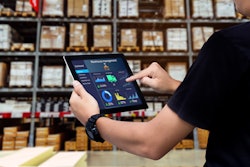
It’s easy to examine the current state of logistics and conclude that we’re facing the most difficult problems the industry has ever seen. After all, it’s not often that the world experiences a pandemic that essentially ceases all business operations for two years.
Target’s recent announcement of its inventory optimization plan is a strong indicator to the retail industry at large that agility will be the name of the game for the second half of 2022. This will not only require front-end optimization strategies, but will compel retailers to enable flexibility all the way to the last mile as well.
The pandemic also fundamentally changed consumer behavior, driving customers to new purchase channels. eCommerce, for example, saw tremendous growth as consumers quickly realized the convenience and relative safety of the shopping model. A report from Anyline, a mobile data capturing company, revealed that people have relied more on last mile delivery and have purchased items online that they would normally buy in person, including groceries (43%), and home essentials (30%). According to Digital Commerce 360, the pandemic contributed an extra $218.53 billion to eCommerce’s bottom line over the past two years.
The subsequent growth in online shopping volume combined with transportation shortages and supply chain challenges have created both a huge inventory problem and friction throughout the entire logistical process. Current challenges facing last mile logistics in 2022 include:
- Cost: Meeting customer demands for fast, high-quality deliveries can be a pricey endeavor. When you factor in fuel, labor, complex routing and penalties for delays, last mile delivery accounts for an average of 53% of the total cost of shipping.
- Routing Efficiency: To reduce costs and improve delivery experiences, planning efficient routes is a must. However, it’s a difficult task dependent on a multitude of factors such as fuel efficiency and sustainability. The pressure of efficient route planning is so great that failure to do so correctly can result in delayed or missed deliveries, negatively affecting the customer experience.
- Predicting Delivery Density: Businesses must strike the right balance of having the appropriate delivering capacity. An excess of drivers equals wasted resources. However, being overwhelmed with orders and the inability to deliver them in the expected time frame is harmful to the company’s image, hurting the business in the long run. The challenge of juggling delivery volumes with existing processes is becoming more difficult.
- Unpredictability in Transit: As if the task of developing a last mile logistics solution based on measurements, data and calculations isn’t difficult enough, organizations must also predict the unpredictable in the delivery process. Many factors are uncontrollable, such as weather, sudden road closures or vehicle collisions.
- Availability of the Customer: Even after demanding a delivery in their desired timeframe, customers still often miss their scheduled delivery appointment. There are instances where customers are unable to make themselves available or experience last-minute schedule conflicts. Regardless, the onus is with the retailer to make it right.
- Outdated Technology: Retailers lacking the necessary last mile technological infrastructure will fall behind competitors that have invested in it. Without the right tools, there are many challenges last mile logistics can introduce or amplify, like poor order visibility, scheduling issues caused by confusion or miscommunication and ambiguous inventory levels.
Due to the current environment, flexibility and customer experience are at war. Retailers must reinvent their approach to sales, fulfillment, inventory placement and visibility. This dramatic remake of the landscape requires many different service levels for last mile delivery. Every omni-channel seller is investing heavily in solving for speed, flexibility and convenience, but there is still much technological and operational work to be done to achieve the vision of delivering items when and how consumers want them. Scalable solutions and strategies are needed as retailers adjust to this current economic environment.
To meet consumer expectations, retail businesses must have port-to-door visibility from the inception of the order all the way to the local last mile delivery. The ability to identify items available to fulfill customer orders will ultimately allow retailers to plan out their inventory. As well, retailers should lean on third-party logistics partners that can facilitate this process for both the consumer and the retailer. An even bigger priority is to find ways to boost worker morale and increase retention so that they will be incentivized to support the current supply chain shortages.
The fluidity of last mile logistics adapting to current and foreseeable trends is a precise process. After all, the logistics industry, especially for the last mile, has a background of agility. This is possible because key players have demonstrated adaptability when it mattered most. As a result, being steadfast yet flexible in the last mile will be the name of the game for success during the second half of 2022.


![Pros To Know 2026 [color]](https://img.sdcexec.com/mindful/acbm/workspaces/default/uploads/2025/08/prostoknow-2026-color.mduFvhpgMk.png?auto=format%2Ccompress&bg=fff&fill-color=fff&fit=fill&h=100&q=70&w=100)







![Pros To Know 2026 [color]](https://img.sdcexec.com/mindful/acbm/workspaces/default/uploads/2025/08/prostoknow-2026-color.mduFvhpgMk.png?ar=16%3A9&auto=format%2Ccompress&bg=fff&fill-color=fff&fit=fill&h=135&q=70&w=240)







